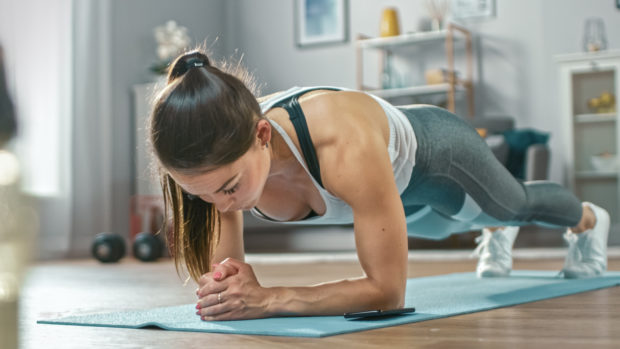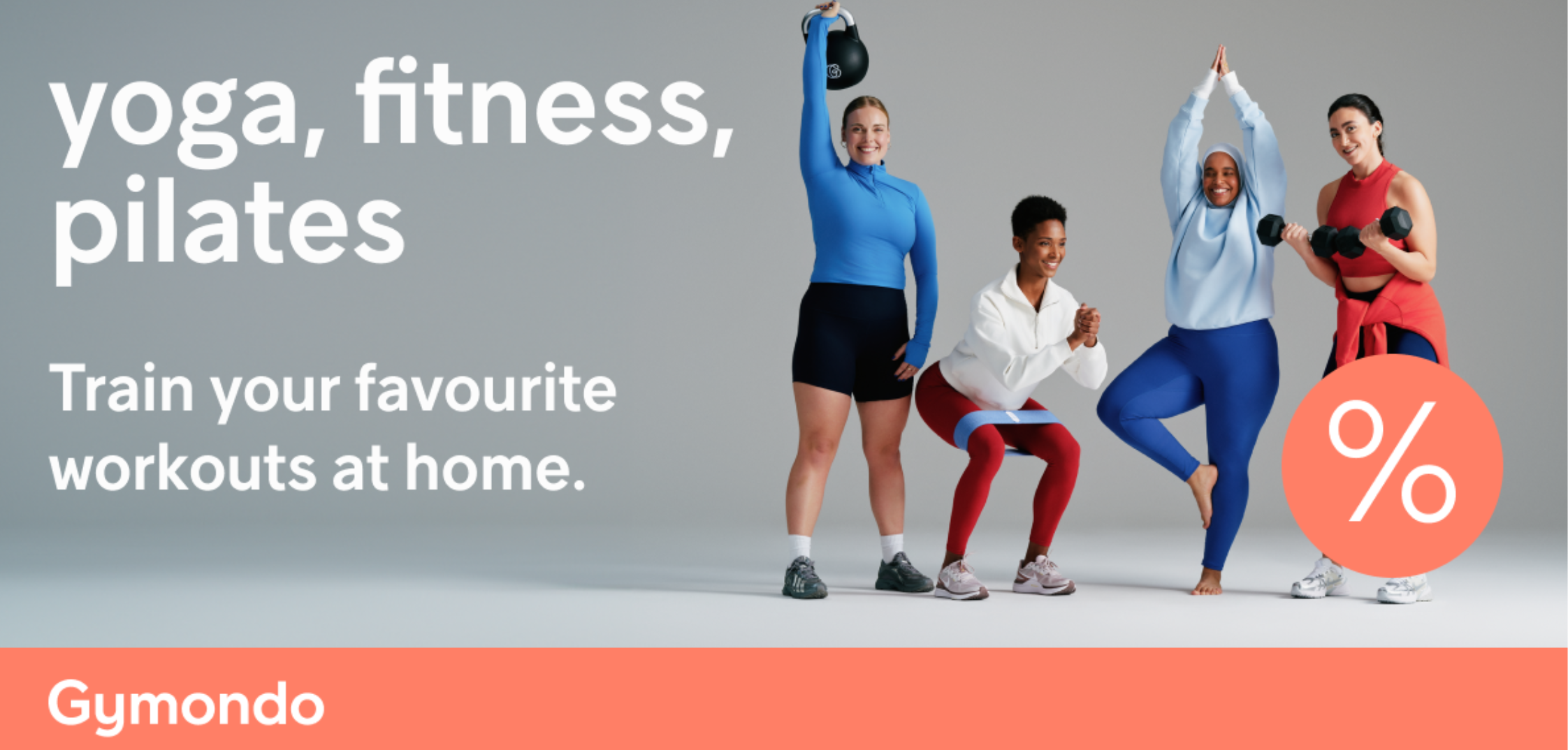
Planks are the perfect exercise for achieving a defined abdomen. This mother of all core stability exercises trains both the back and abdominal muscles. You will now learn why this exercise is so sensationally effective and how to perform the correct execution.
Let’s be honest: everyone wants to have strong, defined abdominal muscles. The abdomen is and remains the number 1 problem zone. Targeted core training is the solution. A good body core tension can not only prevent back pain, but it can also build a toned body with a correspondingly low body fat content which just looks great.
Plank – Which muscles do you work out?
Ok, you can train your core, but what does that mean? What muscles does this refer to? It’s simple: all the muscles of your torso. Everything except the arms and legs. You can think of the core muscles like a can. The inner wall of this can is responsible for the stability and fine adjustment of your spine, while the outer wall moves your torso, i.e. bends, stretches, turns, etc. The diaphragm and the pelvic floor muscles are the lid or bottom of the can. All the muscles and muscle groups in this can are in permanent interaction and ideally act perfectly as a team.
Why is core training so important?
For most people with back problems, the teamwork of the core muscles is disrupted. Core training provides a remedy for this: the superficial dynamic musculature along with the deep-lying supportive muscles are strengthened and networked in a coordinated way. This, in turn, improves the quality of all your movements. So, core training is not only important for a healthy back but for almost all types of sports: martial arts, running, surfing, dancing, climbing, snowboarding… No matter what type of sport or what kind of exercising you do, you always need a strong, coordinated, and powerful mid-body musculature. Torso training is particularly ideal for sports where you make twisting movements, such as golf or tennis. The torso provides the connection between the upper body and lower body strength. For example, if this is strong, you can hit a tennis ball harder and further. Well-trained support muscles also generally improve body tension and thus your posture as well. In everyday life, a strong corset muscle protects you from back problems, injuries, and pain. So, there are many good reasons to include exercises like planks in training.
And what about crunches or sit-ups?
To create a strong, stable connection between the upper and lower body, simple, isolated flexion exercises such as crunches are useless because they only train the straight abdominal muscles. What benefit do the countless torso bends give you? What sport needs something like this? High diving maybe. The plank, on the other hand, is much more functional. Here, all the core muscles are trained and their teamwork is improved. Physiotherapists have been doing stabilization exercises, such as the plank, for years. In fitness sports, strength and athletic training, it took a little longer to recognize their benefits – even though it’s basically as clear as day: What is the task of the core muscles in everyday life and in sports? Stabilization, of course. Well then, work on that stabilization!
Plank – how it works!
You start in the all-fours stance. Now come onto your elbows supported on your forearms and make a fist with your hands! Stretch both legs backward and align your body from head to heels in a straight line! Your feet are placed at hip-width distance on the balls of your feet. Tense your core muscles actively and hold this position, while still breathing evenly! Too hard? Just lower your knees. This reduces the leverage and intensity. Too easy? Then lift a leg! Still too easy? Then also raise the opposite arm to the lifted leg!
Avoid the typical mistakes!
Make sure your hips stay low and in line with your back! Many people tend to lift their hips, especially when it gets exhausting, many people tend to lift their hips, which reduces the effectiveness and unnecessarily shifts the burden to the shoulders. Stay stable and low! You should also avoid the opposite, letting your hips sag. Keep the entire front of your body compact, firm and tense – no hollow back! As soon as you lose the form, it’s best to take it down a gear to the easy option on your knees or take a quick break. Planks with a hollow back position cause stress and pressure in the lumbar region and thus do more harm than good. Make sure to also pay attention to ensuring a neutral head-neck alignment. What many people apparently forget time and time again in all plank or push-up positions: the cervical spine is part of your back. So don’t hang your head – in the truest sense of the word. Pull your chin in slightly to keep the neck long and neutral and actively push yourself away from the mat using your elbows to keep the shoulder girdle stable!
Feeling bored? Not with planks!
How can you vary planks? The “normal” plank strengthens the straight abdominal muscles in particular. on the other hand, if you guide the movement sideways on one arm, the oblique abdominal muscles are then trained. The side plank is only one variation. There are countless other possibilities. Try to lift an arm and/or a leg off the ground or begin to shift in the plank and shift your weight by pushing back and forth from your toes. Another option is the high to low plank, where you support yourself on your hands and then go back onto your elbows.
Well then, good luck training and have fun planking!
Get fit with Gymondo
Do you finally want to bring more fitness into your everyday life? Then join Gymondo and discover the whole world of food & fitness!





Kommentar schreiben